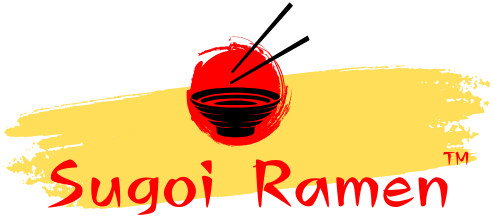Ramen, a beloved dish originating from Japan, has taken the global culinary scene by storm. Its tantalizing aroma, rich broth, and springy noodles have made it a staple for food enthusiasts. However, one question that often arises among health-conscious consumers is: How much fat does ramen really contain? In this article, we delve deep into the Ramen Fat Content, analyzing its nutritional aspects, potential health impacts, and ways to enjoy ramen without guilt.
Understanding Ramen and Its Components

Ramen is a harmonious combination of several key elements, each contributing to its unique taste and nutritional profile:
1. The Broth: A Flavorful Base
Ramen broth, the soul of the dish, comes in various forms:
- Shoyu (Soy Sauce-based): Typically light with moderate fat content.
- Miso (Fermented Soybean Paste-based): Rich and creamy, often containing higher fat levels.
- Tonkotsu (Pork Bone-based): A creamy and luxurious broth with a high fat content due to the pork fat used during preparation.
2. Noodles: The Carbohydrate Foundation
Ramen noodles are made from wheat flour, water, and kansui (alkaline mineral water). While they are low in fat, their calorie content can vary depending on portion size and additional oil used during preparation.
3. Toppings: The Flavor Enhancers
Popular toppings like pork belly (chashu), soft-boiled eggs, and sesame seeds can significantly influence the fat content in ramen. While vegetables like spinach and seaweed add minimal fat, meat-based toppings contribute substantially to the total fat intake.
Breaking Down the Fat Content in Ramen
The Ramen Fat Content depends on multiple factors, including preparation style and portion sizes. Here’s a breakdown:
1. Fat Content in the Broth
- Shoyu Ramen: Contains approximately 5-7 grams of fat per serving, primarily from the soy sauce and any oils added.
- Miso Ramen: Averages 8-12 grams of fat due to the fermented soybean paste and potential inclusion of butter or sesame oil.
- Tonkotsu Ramen: Known for its rich texture, this broth contains 15-25 grams of fat per serving, largely from pork fat emulsified into the broth.
2. Fat in Noodles
Ramen noodles typically contain 1-3 grams of fat per serving. The cooking method (e.g., stir-fried versus boiled) may slightly alter this value.
3. Topping Contribution to Fat Content
- Chashu (Pork Belly): A single slice can add 5-7 grams of fat.
- Ajitsuke Tamago (Seasoned Egg): Contributes around 4-6 grams of fat.
- Fried Garlic or Onions: Adds 1-3 grams of fat, depending on the quantity used.
Health Implications of Ramen Fat Content

Understanding the Ramen Fat Content is crucial for maintaining a balanced diet. Here’s what you need to know:
1. Saturated Fat Concerns
Tonkotsu ramen, for instance, is high in saturated fats, which, when consumed excessively, can contribute to cardiovascular issues.
2. Caloric Impact
The combined fat from the broth, noodles, and toppings can result in a calorie-dense meal. A standard bowl of ramen can contain between 500 and 1200 calories, with fat accounting for a significant portion.
3. Sodium and Fat Synergy
The high sodium content in ramen amplifies the flavor of fat, making it an indulgent but potentially unhealthy choice if consumed frequently.
How to Enjoy Ramen While Managing Fat Intake
For those who wish to savor the flavors of ramen without compromising on health, here are some strategies:
1. Opt for Low-Fat Broth Options
Choose shoyu or clear broth ramen, which typically has lower fat content than creamy variants like tonkotsu.
2. Customize Your Toppings
Swap high-fat toppings like chashu for leaner proteins such as grilled chicken or tofu. Incorporating more vegetables can also help reduce overall fat content.
3. Watch Portion Sizes
Smaller portions of noodles and toppings can significantly lower the total fat intake.
4. Make Ramen at Home
Homemade ramen allows complete control over the ingredients. Using less oil, lean meats, and low-sodium soy sauce can make a healthier bowl.
Exploring Alternatives: Low-Fat Ramen Options

Brands and restaurants are increasingly offering healthier ramen alternatives:
- Vegetarian Ramen: Focuses on plant-based broths and toppings.
- Gluten-Free Noodles: Often made with lower-fat ingredients.
- Brothless Ramen (Mazemen): Eliminates the fat-heavy broth entirely.
Conclusion: The Truth About Ramen Fat Content
Ramen is a dish that marries flavor with indulgence. While its fat content varies significantly based on preparation and ingredients, mindful choices can make it a part of a balanced diet. By understanding its nutritional nuances, you can continue to enjoy the rich flavors of ramen without compromising your health.
FAQ’s
Q1. Does all ramen have high fat content?
Not necessarily. The fat content varies based on the type of broth, noodles, and toppings used.
Q2. How can I reduce the fat content in ramen?
Not necessarily. The fat content varies based on the type of broth, noodles, and toppings used.
Q3. Is instant ramen lower in fat compared to restaurant ramen?
Instant ramen can be lower in fat, but it often contains higher sodium levels and fewer fresh ingredients.
Q4. Are there healthy ramen recipes?
Yes, homemade ramen with vegetable broth, whole-grain noodles, and lean proteins is a nutritious alternative.
Q5. Can ramen be part of a weight-loss diet?
Ramen can be included in moderation, with portion control and careful ingredient choices.







